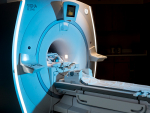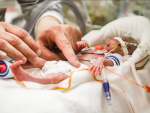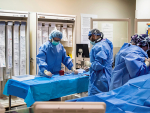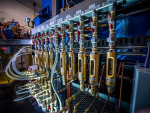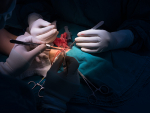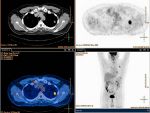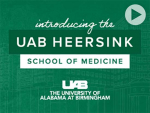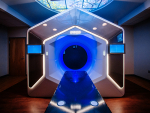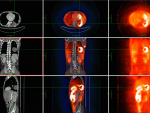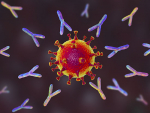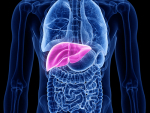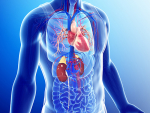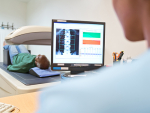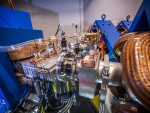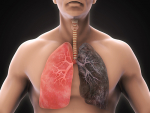Displaying items by tag: department of radiology
Tagged under
She works in health care at UAB and has a premature daughter born with cerebral palsy. Crystal Odom steps up as the newest member of a state advisory group for children with disabilities.
Tagged under
- release
- school of medicine
- department of obstetrics and gynecology
- division of maternal fetal medicine
- department of pediatrics
- division of neonatology
- division of pediatric rehabilitation medicine
- department of family and community medicine
- department of radiology
- uab hospital
- women and infants services
- womens health
Tagged under
The facility will produce a reliable supply of isotopes for the United States Department of Energy Isotope Program.
Research in animal models shows better formation of the fistulas, which are a lifeline for kidney failure patients as the connection site to dialysis machines.
Tagged under
Preclinical experiments show how to identify non-responding tumors and improve their response to immunotherapy, using two investigational new drugs that are permitted for human use. Physicians could immediately start investigational research in patients to test the effectiveness of this personalized approach.
Tagged under
The new technology allows health care personnel to observe movement of the lungs, diaphragm and joints.
Tagged under
- release
- advancement
- office of the president
- office of the provost for student and faculty success
- department of anesthesiology and perioperative medicine
- department of neurology
- department of biochemistry and molecular genetics
- department of cell developmental and integrative biology
- department of clinical and diagnostic sciences
- department of dermatology
- department of emergency medicine
- department of family and community medicine
- department of genetics
- department of medical education
- department of medicine
- department of microbiology
- department of neurobiology
- department of neurosurgery
- department of obstetrics and gynecology
- department of ophthalmology and visual sciences
- department of orthopaedic surgery
- department of otolaryngology
- department of pathology
- department of pediatrics
- department of pharmacology and toxicology
- department of physical medicine and rehabilitation
- department of psychiatry and behavioral neurobiology
- department of radiation oncology
- department of radiology
- department of surgery
- division of academic general pediatrics
- division of acute care surgery
- division of adolescent medicine
- division of advanced medical imaging
- division of anatomic pathology
- division of cardiothoracic surgery
- division of cardiothoracic anesthesia
- division of child abuse pediatrics
- division of clinical immunology and rheumatology
- division of community anesthesia
- division of diagnostic radiology
- division of developmental and behavioral pediatrics
- division of forensic pathology
- division of gastroenterology and hepatology
- division of gastrointestinal surgery
- division of general internal medicine
- division of general pediatrics and adolescent medicine
- division of genomics and bioinformatics
- division of gerontology geriatrics and palliative care
- division of gynecologic oncology
- division of hematology and oncology
- division of infectious diseases
- division of informatics
- division of laboratory medicine
- division of maternal fetal medicine
- division of molecular and translational biomedicine
- division of molecular imaging and therapeutics
- division of multispecialty anesthesia
- division of neonatology
- division of nephrology
- division of neuro oncology
- division of neuropathology
- division of pain medicine
- division of pediatric allergy and immunology
- division of pediatric hematology oncology
- division of pediatric cardiology
- division of pediatric critical care medicine
- division of pediatric dermatology
- division of pediatric emergency medicine
- division of pediatric endocrinology
- division of pediatric gastroenterology
- division of pediatric hospital medicine
- division of pediatric infectious diseases
- division of pediatric nephrology
- division of pediatric neurology
- division of pediatric oncology
- division of pediatric optometry
- division of pediatric pulmonary and sleep medicine
- division of pediatric rehabilitation medicine
- division of pediatric rheumatology
- division of pediatric surgery
- division of plastic surgery
- division of preventive medicine
- division of pulmonary allergy and critical care medicine
- division of reproductive endocrinology and infertility
- division of surgical oncology
- division of transplantation
- division of vascular surgery and endovascular therapy
- 1917 clinic
- acute care for elders unit
- addiction recovery program
- addiction recovery scholars
- alabama genomic health initiative
- all of us research program
- autism spectrum disorders clinic at uab
- center for addiction and pain prevention and intervention
- center for aids research
- center for clinical and translational science
- center for emerging drug discovery
- center for exercise medicine
- center for free radical biology
- center for interprofessional education and simulation
- center for genomic medicine
- center for low vision rehabilitation
- center for metabolic bone disease
- center for neurodegeneration and experimental therapeutics
- center for outcomes and effectiveness research and education
- center for palliative and supportive care
- center for pediatric onset demyelinating disease
- civitan international neuroimaging laboratory
- civitan international research center
- civitan sparks clinics
- comprehensive arthritis musculoskeletal and autoimmunity center
- comprehensive cardiovascular center
- comprehensive center for healthy aging
- comprehensive diabetes center
- comprehensive neuroscience center
- comprehensive stroke center
- comprehensive transplant institute
- deep south resource center for minority aging research
- gregory fleming james cystic fibrosis research center
- epilepsy center
- heflin center for genomic sciences
- hepatorenal fibrocystic diseases core center
- informatics institute
- institute for cancer outcomes and survivorship
- legacy of hope
- liver center
- lung health center
- mcknight brain institute
- minority health and health equity research center
- mucosal hiv and immunobiology center
- multiple sclerosis center
- national spinal cord injury statistical center
- nephrology research and training center
- obesity health disparities research center
- obrien center for acute kidney injury research
- pancreatobiliary disease center
- parkinsons disease information and referral center
- pediatric pulmonary center
- precision medicine institute
- primary care research collaborative
- spain rehabilitation center
- school of medicine
Adaptive radiation therapy allows for more precise treatment by fine-tuning the treatment regimen based on up-to-date imaging.
Researchers find a role for citrullinated vimentin as a damage-associated molecular pattern molecule, or DAMP, that is generated by lung macrophages in response to environmental cadmium/carbon black.
Tagged under
If these hollow capsules are modified to target a solid tumor, PET imaging and therapeutic ultrasound can be used to rupture them and release an anticancer drug at ground zero.
Tagged under
In advance of public vaccination, a quick and accurate COVID-19 antibody test will help determine the presence of neutralizing antibodies, the molecules that aid in protection against the virus.
Tagged under
A local early-stage startup has been approved for low-cost, low-risk, non-invasive procedures for patients with chronic liver disease.
Tagged under
Benjamin Larimer, Ph.D., has received a $1.5 million award to conduct research on a PET-based diagnostic tool that could identify patients who will respond to immunotherapy.
Tagged under
Tagged under
An O’Neal Comprehensive Cancer Center scientist presents at a major oncology meeting about a novel artificial intelligence software tool to assist evaluating tumor response in advanced cancers.
Tagged under
Coronary microvascular dysfunction is a precursor to later heart disease, heart failure and possible death.
Tagged under
Tagged under
Airway fractal dimension gives added prognostic information over traditional CT scan measures in COPD.
Tagged under
